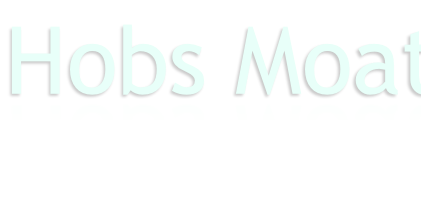

. . . but looking well thereabouts, and making diligent enquiry of the inhabitants, I found a large Moat,. . . . . . . . . . whereon they say a Castle long since was situate .
Some of the neighbourhood do call this Hoggs moat . . .
- Sir William Dugdale, 1656
Thank you for your visit today. The website is being revised at the moment - please let us know if an interactive element does not work on your device.
Day-to-Day . . .
As a social enterprise, the project sat between the world of archaeology and that of local and central government - a refuge for unemployed people in a time of mass unemployment.
A primary purpose was to keep long-term unemployed persons close to the world of work.
The project generated paper, too, like any business. Here’s some of it.
Often, the record-keeping was by the employees themselves.
<< enim vitae
Community projects were administered locally by bodies directing central government funding. In Solihull, Solihull Enterprise Agency, latterly Solihull Community Enterprise managed or administered several projects.
The administrative records of the Agency:
1985-1986 (large file)
An intractable problem for Hobs Moat was its significance in the perceptions of the landowner. As unusable land in a period of great growth in the local economy it commanded no attention, and could only be described as an open space. The funding it did attract was a charitable donation - an emergency salve in the budgets of the Authority.
Likewise, the community project was a temporary measure - a windfall for an historic site whose owners had no policy for its management, who were unable to approach its future. In 1989 things appeared bleak.
Twenty years later there was some progress.
Popularising archaeology and local history was an aspect of the project. This was in part to counter a local belief that there was ‘nothing of historical interest’ in the Borough.
Schools and Exhibitions
Talks
Papers
Hobs Moat: some historical notes
Sites of historical interest in Solihull
Stray finds in and around Solihull
Community projects were administered locally by bodies directing central government funding. In Solihull the ink was Solihull Enterprise Agency, latterly Solihull Community Enterprise, set up by the borough. It managed or administered several projects.
Its relationship with the projects varied and could be ambiguous, as was its status within the local government hierarchy.
The administrative records of the Agency:
1985-1986 (large file)
An intractable problem for Hobs Moat was its significance in the perceptions of the landowner. As unusable land in a period of great growth in the local economy it commanded no attention, and could only be described as an open space. The funding it did attract was a charitable donation - an emergency salve in the budgets of the Authority.
Likewise,he community project was a temporary measure - a windfall for an historic site whose owners had no policy for its management, who were unable to approach its future. In 1989 things appeared bleak.
Twenty years later there was some progress.
Monthly Reports to Managing Agency
Training courses for project employees
1987-1988
Attendance and time-keeping record
Disciplinary record
Holiday, lieu day and stock record
Protective clothing issue
Photography and slides
Supervisors site note-books (archaeology)
one - 1986
one - 1987
one - 1988
An intractable problem for Hobs Moat was its significance in the perceptions of the landowner. As unusable land in a period of great growth in the local economy it commanded no attention, and could only be described as an open space. The funding it did attract was a charitable donation - an emergency salve in the budgets of the Authority.
Likewise, the community project was a temporary measure - a windfall for an historic site whose owners had no policy for its management, who were unable to approach its future. In 1989 things appeared bleak.
Twenty years later there was some progress.
A difficult problem for Hobs Moat was how to manage the site after the ending of the community project.
The community project was a temporary measure - a windfall for the owner.
An intractable problem for Hobs Moat was its significance in the perceptions of the landowner. As unusable land in a period of great growth in the local economy it commanded no attention, and could only be described as an open space. The funding it did attract was a charitable donation - an emergency salve in the budgets of the Authority.
Likewise, the community project was a temporary measure - a windfall for an historic site whose owners had no policy for its management, who were unable to approach its future. In 1989 things appeared bleak.
Twenty years later there was some progress.